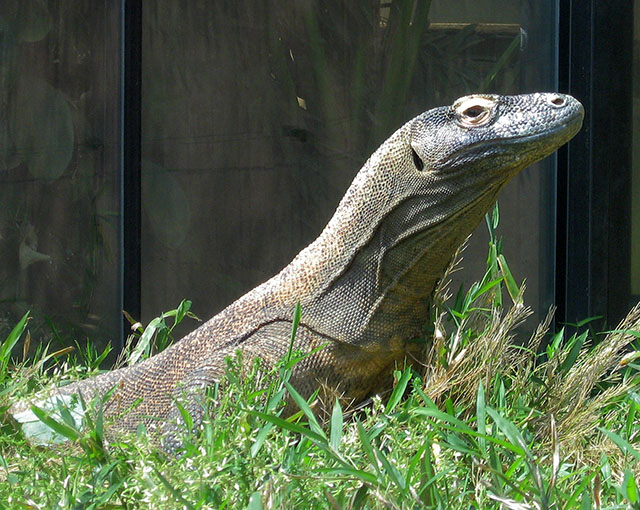Beauty is in the eye of the beholder. But reptiles are, for most beholders, not quite as cute as a pygmy goat. This human gravitation toward fuzzy, baby-eyed animals is actually a big problem for environmentalists struggling to preserve endangered and threatened species.
Call it the “tyranny of the cute.” When it comes to conservation of habitats and species, the cute have an advantage. Darwin may not have factored “fundraising potential” into his survival of the fittest, but charismatic critters sell more calendars and raise more money.
This is a big deal for reptiles. Reptiles are almost a third of invertebrates on the planet, but don’t make it to their fair share of conservation lists. The World Wildlife Fund only identifies two reptiles (and they’re turtles, which are adorable). We also know less about them.

In a recent paper from Oxford and Tel Aviv Universities published in the journal Biological Conservation, we have a good sense of how this plays out on Wikipedia. After all, Wikipedia reflects the passions and interests of those who write it. In 2014, those writers had tackled 10,002 reptiles species. Across all languages, those pages were viewed 55 million times.
Curiously, the researchers found that two thirds of reptile species were missing articles on the English Wikipedia. For academic experts specializing in zoology, ecology, environmental sciences, and a slew of other fields, this gap in public knowledge presents an enormous science communications opportunity.
After all, Wikipedia is “the Internet’s favorite website,” with a greater share of mobile traffic than CNN, Fox News, and USA Today combined. It’s an unprecedentedly powerful public resource.
Of course, not every expert has the time to create or review 6,000 reptile articles (or any other species, for that matter). But consider the learning experience this presents to students in higher education.
By stepping in and filling in information about those neglected species, these students become familiar with an underrepresented creature, its habitat, and the challenges it faces. But they also contribute greater knowledge about these neglected species to the rest of the English-speaking world.
That means people have better access to information they can use to guide a range of decisions. It can impact the conservation efforts they support. It can change the way people view land use in their communities.
For students, it gives them an opportunity to become an expert on a topic. The student who writes an article about a reptile species is probably going to be the top Google search result for that species. Imagine the impact that has on motivating student writing and research!
The Wiki Education Foundation has seen enormous success with classes that tackle flora and fauna articles on Wikipedia. Dr. Joan Strassmann’s course at Washington University in St. Louis is just one example. Students in her fall 2015 course created or expanded a whopping 362 articles about bee species.
The success of classes like these inspired us to create guidebooks, such as “Editing Wikipedia articles on species” and “Editing Wikipedia articles about ecology.” For higher ed instructors who participate in our program, we can send print copies for each participating student, free of charge. Participants also gain access to tools that make editing Wikipedia simple for students, and help instructors track student contributions to Wikipedia articles.
Our Wikipedia Year of Science initiative is underway. It’s based on the idea that students, with access to academic resources and guided by experts in the field, are the best bet for improving and expanding science topics on Wikipedia. Putting that knowledge at the fingertips of millions is an enormous driver for improving the public’s understanding of endangered and threatened species that are just as important, but perhaps not quite as cute, as pygmy goats.
If you’d like to participate, check out our Year of Science page, or send us an email: contact@wikiedu.org.
Photo: Kitz Zwergziege by 4028mdk09 – Own work, CC BY-SA 3.0
